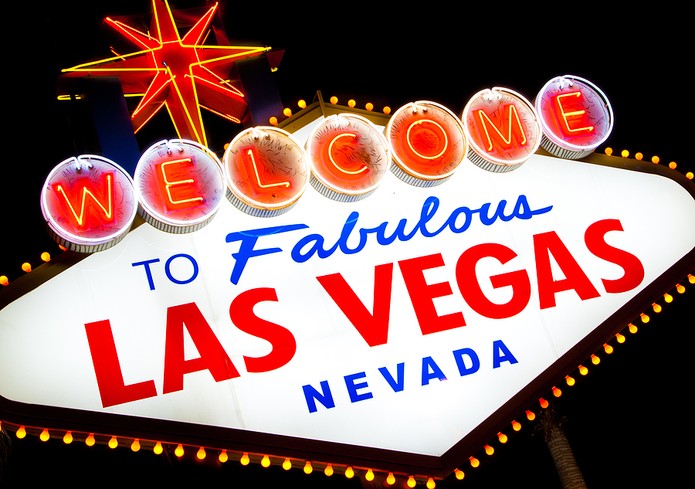 Even the most ardent Formula One fan will, reluctantly, admit that the sport has become rather predictable and one-dimensional.
Even the most ardent Formula One fan will, reluctantly, admit that the sport has become rather predictable and one-dimensional.
From Lewis Hamilton and Mercedes’ period of dominance to the current monopoly of F1’s silverware of Max Verstappen and Red Bull, it just feels that motor racing’s most popular pursuit is in need of a shake up.
And it might just get it courtesy of the Las Vegas Grand Prix.
New races have been added to the schedule at regular intervals over the years, but few can boast the razzmatazz and the hype of F1’s jaunt to Sin City.
It’s not the first time that Formula One chiefs have tried to get the sport into the hearts and minds of Las Vegas patrons – more on that later, but the 2023 edition was the first time that the race became a reality.
But it’s not all been positive. Temperatures in Nevada come November are, well, a little on the chilly side at night – an average of 22°C by day can drop to single digits after the sun goes down; that’s not ideal for high performance vehicles like F1 cars.
And not everyone has been a big fan of the sport taking over the city – so much so that Formula One chiefs have been forced to issue a grovelling apology to local business owners over the disruption.
The Las Vegas Grand Prix could yet prove to be the most controversial race in F1 history….
Why is the Las Vegas Grand Prix at Night?

Formula One bosses wanted to put on the ultimate Las Vegas experience.
This is a city that simply looks better at night; the neon signs and dazzling features of the area’s casinos and entertainment venues presenting Vegas in a whole different light to its rather underwhelming ambience in the daytime.
So that means that the Las Vegas GP has to take place at night – and, given the rollicking atmosphere on the Strip of a Saturday evening, it’s little wonder that bosses have shifted the race from the traditional Sunday start time.
But cool night-time temperatures in the desert state of Nevada have implications for the race and the cars – building tyre temperature in such chilly surroundings could impact the otherwise breakneck speeds anticipated.
Is the Las Vegas Street Circuit on The Strip?
Approximately a third of the race circuit sees the drivers power their way down Las Vegas Boulevard – otherwise known as The Strip.
Better known for its casinos and eclectic nightlife, The Strip is the part of Las Vegas you see on TV and in films – the glitz, the glamour and the iconic buildings like Caesars Palace and the Bellagio dancing fountains.
There’s no shortage of street tracks on the F1 calendar – Circuit de Monaco and Marina Bay in Singapore just two of the most famous examples, and these are typically pretty dangerous while making overtaking very difficult indeed due to narrow, straight lines of their routing.
That said, the cars can reach up to a knee-trembling 212mph on the Las Vegas track, so excitement will not be in short supply.
Why Was the Las Vegas Grand Prix Cancelled?
The Las Vegas Grand Prix might sound like a novel idea – but, believe it or not, it already happened as long ago as the 1980s.
The 1981 Caesars Palace Grand Prix is one of those forgotten moments in F1 history; one of the only times that a Formula One race has been conducted in a casino car park.
But that’s exactly what happened during the 1981 and ’82 seasons, with a circuit carefully constructed in the parking lot of Caesars – to make matters all the more bizarre, in 1981 it was the final race of the season; with the Drivers’ Championship on the line.
The Caesars Palace track ran anti-clockwise – completely opposite to the vast majority of F1 circuits, and the sweat-inducing daytime temperatures caused some of the drivers to fall ill….Nelson Piquet, who went on to clinch the 1981 championship, was violently sick after his practice session.
It’s officially RACE WEEK! Throwback to the Caesars Palace Grand Prix in 1981, where the race was won by Alan Jones and Nelson Piquet picked up enough points to win the first of his 3 World Championships.
📸 Wolf Wergin/Las Vegas News Bureau | #F1 #LasVegasGP pic.twitter.com/XwE2cn1S0s— Caesars Palace (@CaesarsPalace) November 13, 2023
The race returned in 1982, but nobody was satisfied – the drivers hated the track and the conditions, the crowds were much smaller than anticipated and Caesars Palace even ended up losing money on the weekend. Unsurprisingly, F1 wasn’t overly keen to return and withdrew support from the race thereafter.
What is the Netflix Cup?

Las Vegas is not shy of gimmicks and tomfoolery in a bid to get punters into its casinos.
And Netflix, which has been an F1 supporter via its ‘Drive to Survive’ documentary, has conjured up its own horseplay via the Netflix Cup.
To coincide with the Las Vegas Grand Prix, this event paired a handful of F1 drivers with their counterparts from the world of golf – they too had starred in a Netflix documentary series ‘Full Swing’.
Lando Norris was paired with Rickie Fowler, Carlos Sainz with Justin Thomas and so on in the eight-hole extravaganza that was, well, pretty pointless from a sporting standpoint but decent PR for the Las Vegas GP nonetheless.